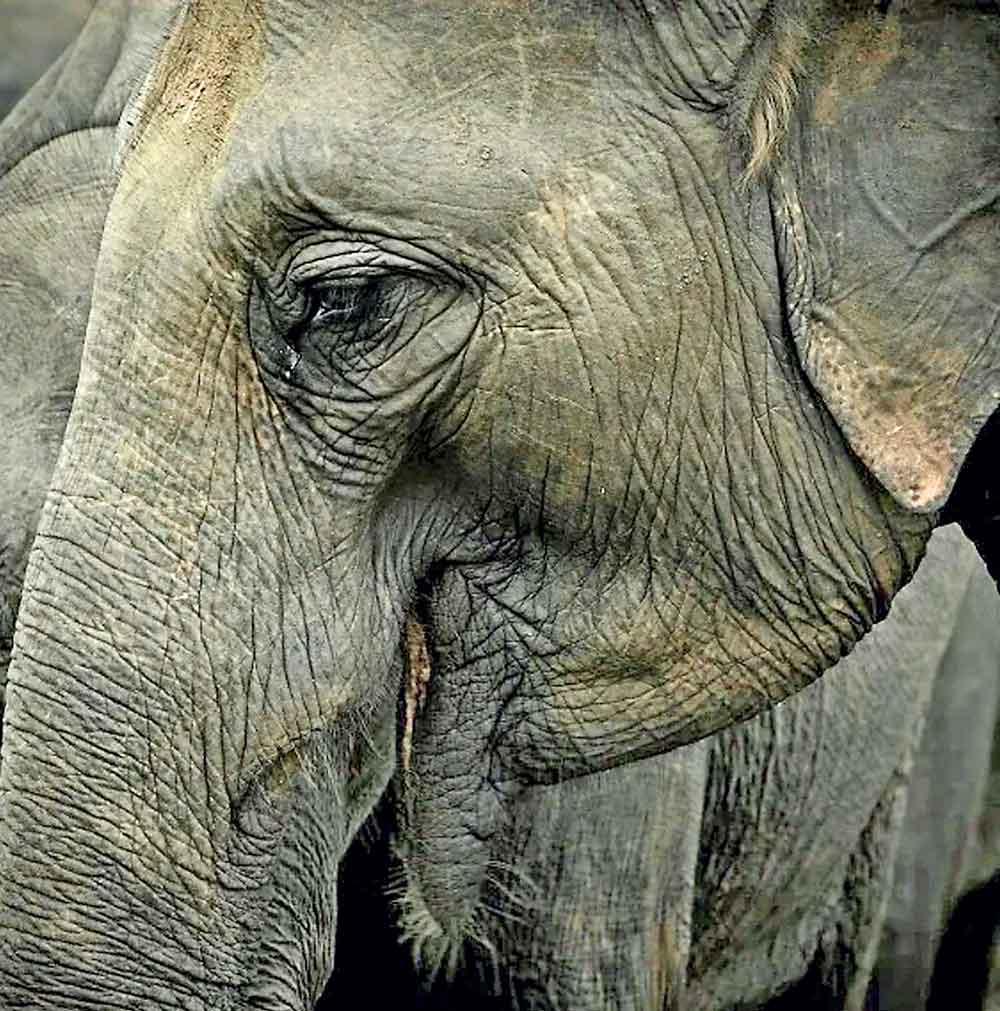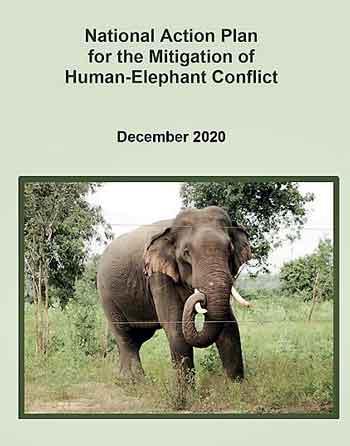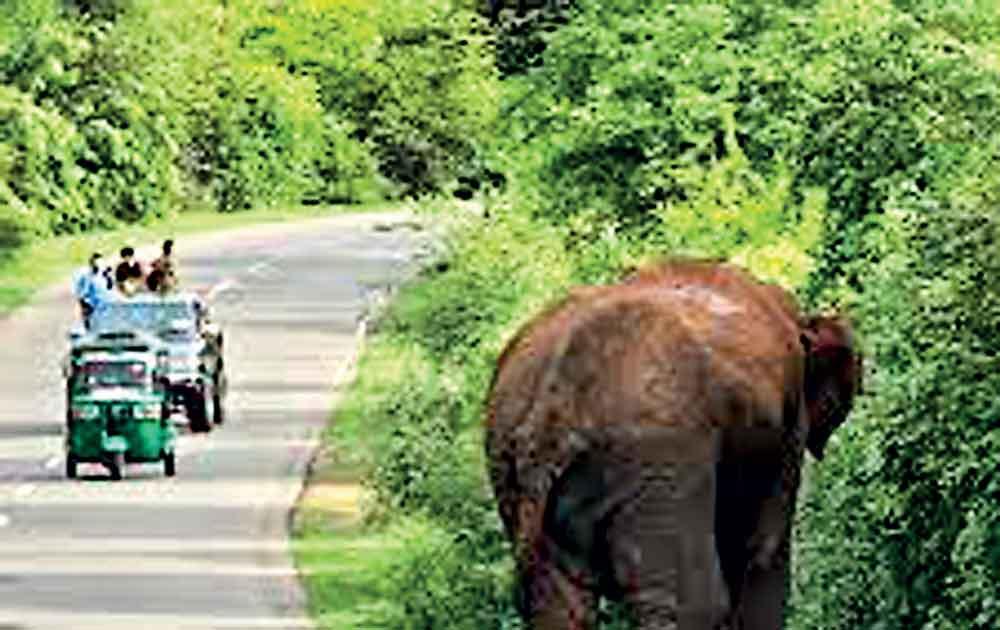01 Jan 2025 - {{hitsCtrl.values.hits}}

 Sri Lankan citizens have many hopes and aspirations towards the incumbent government which was elected to power through a large mandate. The incumbent government’s solution to mitigate the human-elephant conflict aims to implement a community-driven approach to mitigate the conflict by assessing elephant migratory patterns and their habitats based on biological interventions and new technological innovations. But it is rather unfortunate that this decision had been implemented in an unscientific and an ad hoc manner. A classic example is the decision to conduct elephant drives by chasing away herds of elephants living outside protected areas and forest reserves to faraway areas.
Sri Lankan citizens have many hopes and aspirations towards the incumbent government which was elected to power through a large mandate. The incumbent government’s solution to mitigate the human-elephant conflict aims to implement a community-driven approach to mitigate the conflict by assessing elephant migratory patterns and their habitats based on biological interventions and new technological innovations. But it is rather unfortunate that this decision had been implemented in an unscientific and an ad hoc manner. A classic example is the decision to conduct elephant drives by chasing away herds of elephants living outside protected areas and forest reserves to faraway areas.
 Since the inception of the Wildlife Conservation Department, their main objective in terms of elephant conservation and in mitigating the HEC was to confine elephants to areas coming under the purview of the DWC. But even 60 years later, around 70% of elephants live outside their habitats, in close proximity to human settlements. Therefore it has been proven to be an unsuccessful effort. On the other hand, many DWC officials have sacrificed their lives while confining elephants to forest reserves and protected areas. One of the main reasons is due to changes in elephant behaviour, issues regarding the capacity of elephants and various other biological and scientific reasons.
Since the inception of the Wildlife Conservation Department, their main objective in terms of elephant conservation and in mitigating the HEC was to confine elephants to areas coming under the purview of the DWC. But even 60 years later, around 70% of elephants live outside their habitats, in close proximity to human settlements. Therefore it has been proven to be an unsuccessful effort. On the other hand, many DWC officials have sacrificed their lives while confining elephants to forest reserves and protected areas. One of the main reasons is due to changes in elephant behaviour, issues regarding the capacity of elephants and various other biological and scientific reasons.
Statistics issued by the DWC reveals that it is difficult to prevent elephant deaths that occur due to starvation particularly among elephants who return to their original habitats. Therefore based on these facts and reasons, the incumbent government’s decision to conduct elephant drives deems to be unsuccessul. Female elephants and their calves find it difficult to find their fodder and water in foreign environments, particularly after removing them from their original habitats. In such situations they are confined to areas surrounded by electric fences and are unable to find food. Due to lower nutrition levels calves are unable to survive.
In 2006, as a result of the Walawe Left Bank development project around 400 elephants were sent to the Lunugamvehera National Park. However as a result, many of these elephant died as they suffered due to lack of fodder and they were also infected with various illnesses.
In addition, various attempts to drive away elephants in the Wayamba province to Kahalla-Pallekele and Thabbowa sanctuaries and the Wilpattu National park as means of mitigating the HEC were unsuccessful efforts. Elephants herds living in proximity to the Yala National Park were confined to the national park and electric fence was built around it. As a result the generation of elephants living around Handapanagala faced threats of extinction. Female elephants and calves that were confined to Yala Block 1 are dying due to lack of fodder and water. It is important to note that the fact that many elephants are dying due to starvation would leave an irreversible impact on the future generations of these elephant herds.
Research conducted through satellite collaring conducted by the DWC and the Research and Conservation Centre reveals that despite successive elephant drives, lone elephants who contribute to the HEC take much effort to confine themselves to their original habitats. Research also indicates that they return to their original habitats even though they are removed from them. Therefore it has been scientifically proven that conducting elephant drives on elephants living outside protected areas is unsuccessful.
During such elephant drives it is usually the female elephants and their calves that are removed from their habitats. But it is a known fact that lone male elephants contribute to the HEC. Lone male elephants usually leave their original habitats during an elephant drive and return once the mission is over. Following a drive, the remaining elephants usually raid human settlements, vegetable plots and cause damage to property.
Due to repeated elephant drives there is a possibility for female elephants and calves to become habituated towards people. It has been observed that when people resort to various methods to drive away elephants, elephants become less afraid of people, thereby aggravating the HEC.
Elephants become extremely violent when people use elephant crackers and even go to the extent of opening fire at elephants. They will develop hatred and anger towards people. Elephant calves will become used to the souunds, fire and other human interventions that elephants are usually afraid of. The HEC will continue to aggravate as people continue to go into conflict with elephants.
Data obtained through satellite collaring and field research reveals that there are limited areas frequented by elephants in search of fodder and that these areas could be separated. These include forests, shrub forests, private lands, lands that are left following the harvest, abandoned chena cultivations are some of the areas frequented by elephants who go in search of fodder. Elephants could possibly be confined to these areas while the areas in the exterior could be included in development plans and incorporated as human settlements. Thereafter, elephant migratory patterns and behaviour could be observed and permanent and temporary boundaries could be setup between elephant territory and human settlements thereby providing a long-term solution to mitigate the HEC.
But by implementing unsuccessful solutions, it looks like the incumbent government has indirectly attacked environmental conservationists and what they have been advocating for. During former President Gotabaya Rajapaksa’s tenure, during the ‘Gama Samaga Pilisandara’ programme, a decision was taken to conduct an elephant drive to drive away elephants in Karuwalagaswewa towards Wilpattu National Park as means of mitigating the HEC. Even at that point this writer raised concerns on why it would be an unsuccessful effort. But the fact that this going to repeat during the renaissance era is an unfortunate coincidence.
The reduction of human deaths due to the HEC is one example to prove that the ‘National Action Plan to mitigate HEC’ which was brought to light in 2020 amidst various challenges has been a success. Therefore the incumbent government should immediately appoint a Presidential Task Force and spearhead efforts to mitigate the HEC by conserving and protecting elephants within their home ranges as mentioned in the National Action Plan.


In Sri Lanka, around 70% of elephants live outside protected areas (File photo)
04 Jan 2025 3 hours ago
04 Jan 2025 3 hours ago
04 Jan 2025 4 hours ago
04 Jan 2025 6 hours ago
04 Jan 2025 6 hours ago